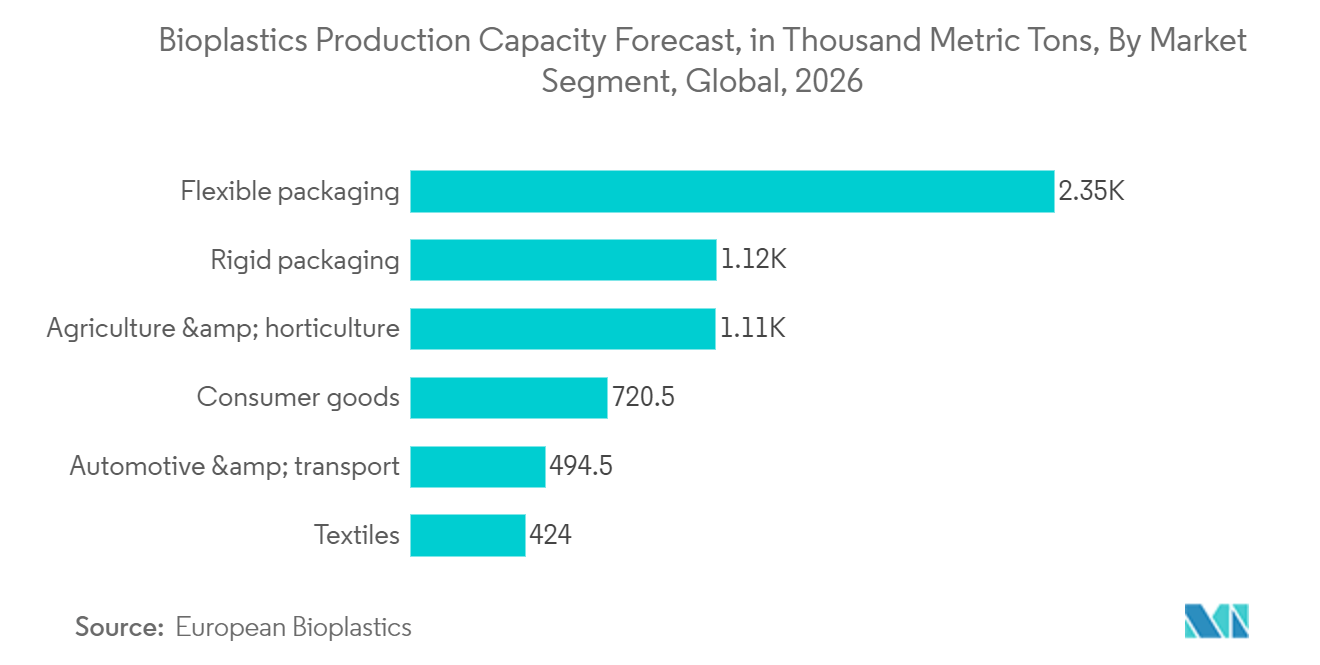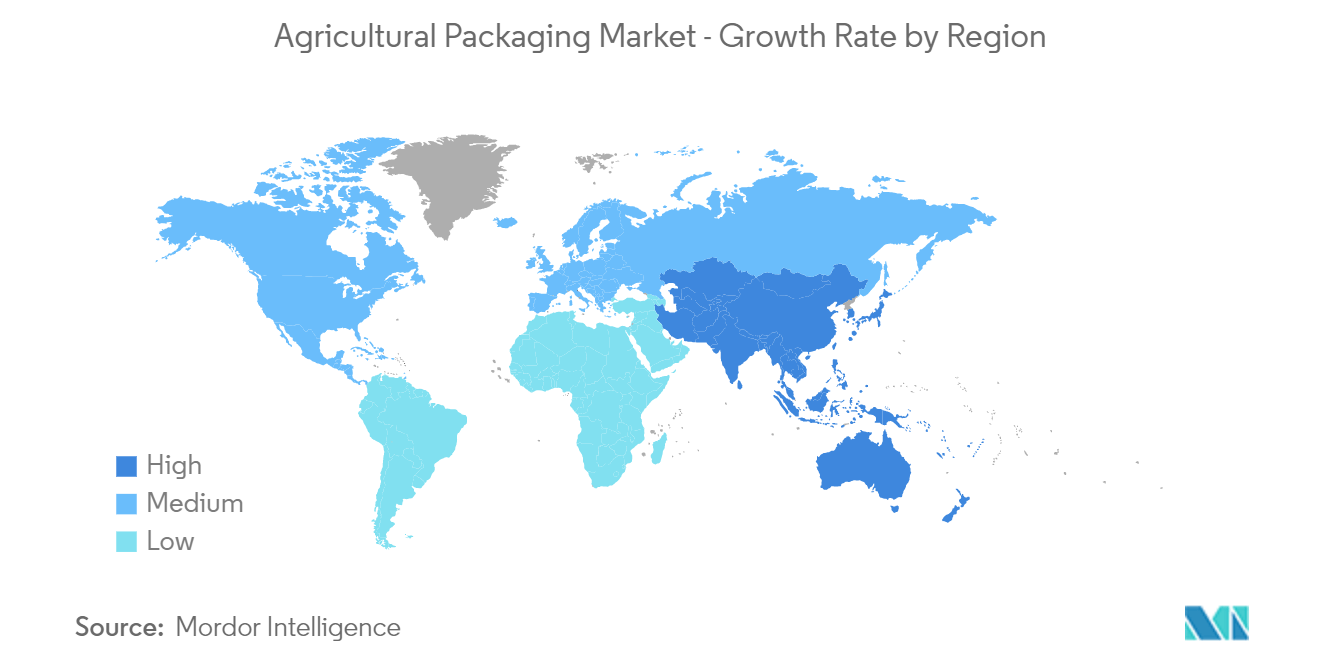Market Trends of Agricultural Packaging Industry
This section covers the major market trends shaping the Agricultural Packaging Market according to our research experts:
Plastic Packaging to Hold a Significant Market Share
- Plastic packaging is influencing market growth due to the rising demand for flexible packaging, as consumers prefer these solutions. For instance, according to the Flexible Packaging Association, more than 60% of North American consumers are ready to pay for functional packaging benefits, such as product protection, supply chain efficacy, and shipping friendly.
- Polyethylene is the cheapest packaging film. The polyethylene materials used for barrier film include HDPE, LDPE, and LLDPE. Polyethylene is easy to process and is combined with gas/aroma barriers, such as Polyamide and EVOH, for their use in various applications. Among these, the elementary-grade material is linear low-density polyethylene (LLDPE). It is a high-clarity film that is widely used for food packaging.
- Moreover, plastics are used in either rigid or flexible forms as packaging material for fertilizers and pesticides. The factors such as lightweight, durable, and economical to manufacture are the reasons behind the growing adoption of plastic in the market.
- Plastics also drive innovation in packaging design. For instance, modified atmosphere packaging helps preserve food freshness by capturing a reduced-oxygen air mixture in a plastic package. This technique can benefit farmers, processors, and distributors that sell in global and national markets and extend the product's shelf life by slowing the growth of bacteria.

Asia-Pacific to Witness the Highest Growth
- Asia-Pacific is experiencing many investments and technological advancements, such as AI-based technologies in agriculture. The emerging countries of the Asia-Pacific region are rapidly adopting smart technologies across the agriculture space.The adoption of precision farming in the region is fueled by various factors, like continuous advancements in technology, a reduced price of equipment, social media use, and online publications that help create awareness.
- Chinese e-commerce giant Alibaba recently got into the farming sector by deploying artificial intelligence in agriculture to assist farmers in increasing crop yield, simultaneously reducing costs. In their smartphones, Alibaba's digitally-recorded information was accessed by farmers, enabling them to monitor whether fruits are ready to be harvested or any pest attack on their standing crops.
- The region is also witnessing higher adoption of sustainable packaging solutions for agricultural products, creating opportunities for global brands to invest in the region further.The rise in the farm yield along with accelerated growth witnessed in a plethora of end-use industries such as seed and pesticides & fertilizers is expected to boost Asia Pacific agricultural packaging market size during the forecast period.
- Market players are increasingly investing in Asia-Pacific region for expanding their manufacturing capacities. For instance, in January 2023, Amcor made an announcement about the launch of its advanced manufacturing facility in Huizhou, China. The 590,000 square foot plant, the largest flexible packaging plant in China by production capacity, represents an investment of approximately USD 100 million, further enhancing Amcor's capacity to satisfy rising client demand throughout Asia Pacific.

